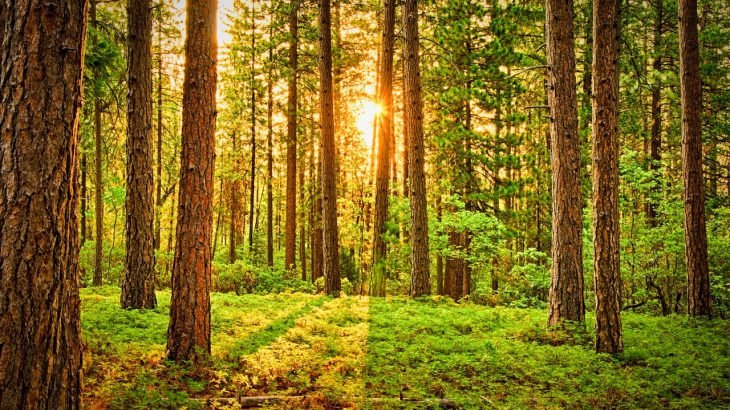According to the newest IPCC report, we are faced with the global crisis of rising temperatures which if not solved, will result in the 2 Celsius global temperature rise. Large scale changes are taking place in the ecosystem services which are creating disturbances and stresses in the ability of ecosystems to survive and adapt. Climate change has already started to affect the already vulnerable communities that depend on the land and natural resources for their livelihoods. These communities are also the most affected when nature takes its toll due to its excessive degradation and human-misuse.
So far, globally, scientists, policy-makers and climate change scientists are focussing on curbing fossil fuel consumption, transforming to renewable energy or supporting climate change with quantifiable data. However, the utmost need of the hour is to invest efforts in a comprehensive solution which is currently the most powerful and cost-efficient carbon-capture technology the world has yet seen: forests. Recent scientific research proves that forests and other “natural solutions” are crucial in alleviating the effects of global warming because of their carbon sequestering attribute. In fact, natural climate solutions can help us achieve 37 percent of our climate target, even though they currently receive only 2.5 percent of public climate financing.
Now, the question which most of us would raise is how can something as basic as forests solve the global catastrophic problem of climate change? Forests’ superpower of carbon sequestration is remarkable – one tree can store annually an average of about 20 kgs of carbon dioxide (source – Earth Share). Due to its high carbon dioxide storing capacity, systematic afforestation is gaining worldwide attention from policy-makers, NGOs, companies and business leaders.
Protecting forests or trees, in general, have multiple benefits. Forests help in climate change mitigation, providing habits to indigenous species and are sources of livelihoods for local communities. Forests filter our air and keep it fresh, stabilize the soil and prevent erosion, improve water quality by slowing and filtering rain water as well as protect aquifers and watersheds, induce rainfall by evaporating water from their leaves , provide food, shade and shelter to humans and wildlife, offer protection from the downward fall of rain, sleet and hail as well as reduce storm run-off and the possibility of flooding, and provide timber and non-timber produce for local communities to rely on for economic prosperity. Through forests we will be able to address diverse issues – food security in many areas, increase farm productivity with an increase in farm-related produce and thereby, help in putting an end to suicide rates amongst farmers. Community managed forests provide avenues for jobs for local communities and help in economic prosperity leading to the blooming of schools, medical facilities, and other services in otherwise impoverished regions. Restored forests provide a renewed resource base.
Can you think of someone other than trees and forests who give us so selflessly without asking for almost nothing in return?
Despite its numerous benefits, we are faced with the global crisis of deforestation and much of it is as a response to turn forests into agricultural lands. Having said that, there has been some hope regenerated in developing economies like India through the sustained efforts of one such social enterprise who has grown over 3.9 million trees (last 9 years) across India and is soon planning to plant trees in Africa as well. Grow-Trees enables individuals and corporates to greet their loved ones with trees in the form of eTreeCertificates at a nominal rate of 85 INR i.e, less than almost a dollar! Grow-Trees believes in breaking the cliches and reconstructing the whole card-gifting culture into a green practice which serves the biodiversity, water resources, pollution levels, and tribal communities.
Grow-Trees was started in 2010 on the World Environment Day by Pradip Shah, the founder of India’s first credit-rating agency, CRISIL. This was the point when climate change and concepts of sustainable development had started to gain popularity globally. In 1992, Pradip Shah, an MBA from Harvard Business School, discovered this “Greet with Trees” tradition in Israel where he had gone to provide his insights on establishing a credit rating agency. “India being such a huge economy should inculcate this tradition amongst individuals and companies to Greet with Trees – plant a real tree in public lands and dedicate it to greet employees/customers/friends with an attractive eTreeCertificate. These trees not only enable one to distinctively greet a friend but also help create incomes for rural residents, improve wildlife habitats, enhance water catchment, and fight climate change.
Few other NGOs and social enterprises are working on similar businesses but Grow-Trees’ consistency and determination over the years have made them the stalwarts of Indian forests and trees across 16 states of India.”Many projects fail because they choose the wrong trees, use too few species or are not managed for the long term. Foresters and ecologists are realizing that for restoration efforts to succeed, they need to think more broadly — about matching trees to their location, about the effects on nearby insects and other animals and about relationships with soil and the changing climate. In other words: the ecosystem”, shares Bikrant Tiwary, CEO of Grow-Trees.
The time is ripe for making concrete efforts for climate change solutions. It’s the need of the hour to pay attention to forest and biodiversity protection and restoration. In doing so, we will be also addressing a number of other pressing global issues. Local communities need to be encouraged to be a part of climate change solutions as they are the most vulnerable. In production landscapes where large-scale tree cover increases are difficult, agroforestry serves as an attractive compromise. Someone’s sitting in the shade today because someone planted a tree a long time ago. Be that someone and participate in the most effective climate change solution – afforestation by planting a tree with Grow-Trees.

I want to help grow trees in my village a hill station in tamilnadu. “Yercaud in Salem district ” what do I do
it,s a good article